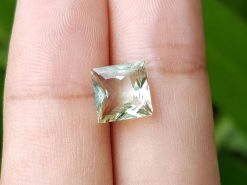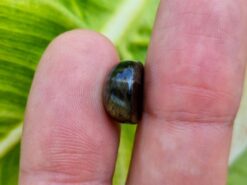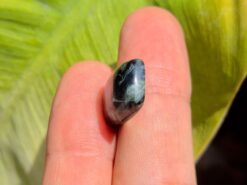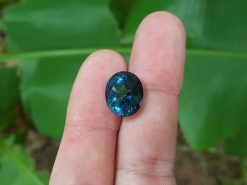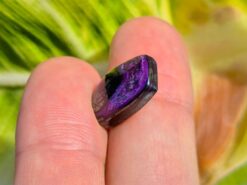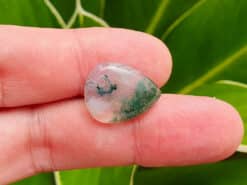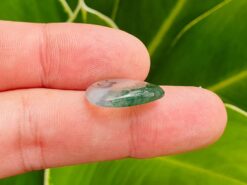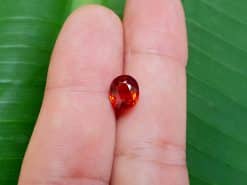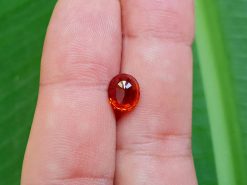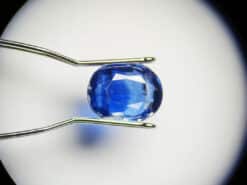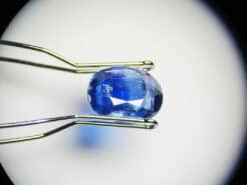Synthetic moissanite
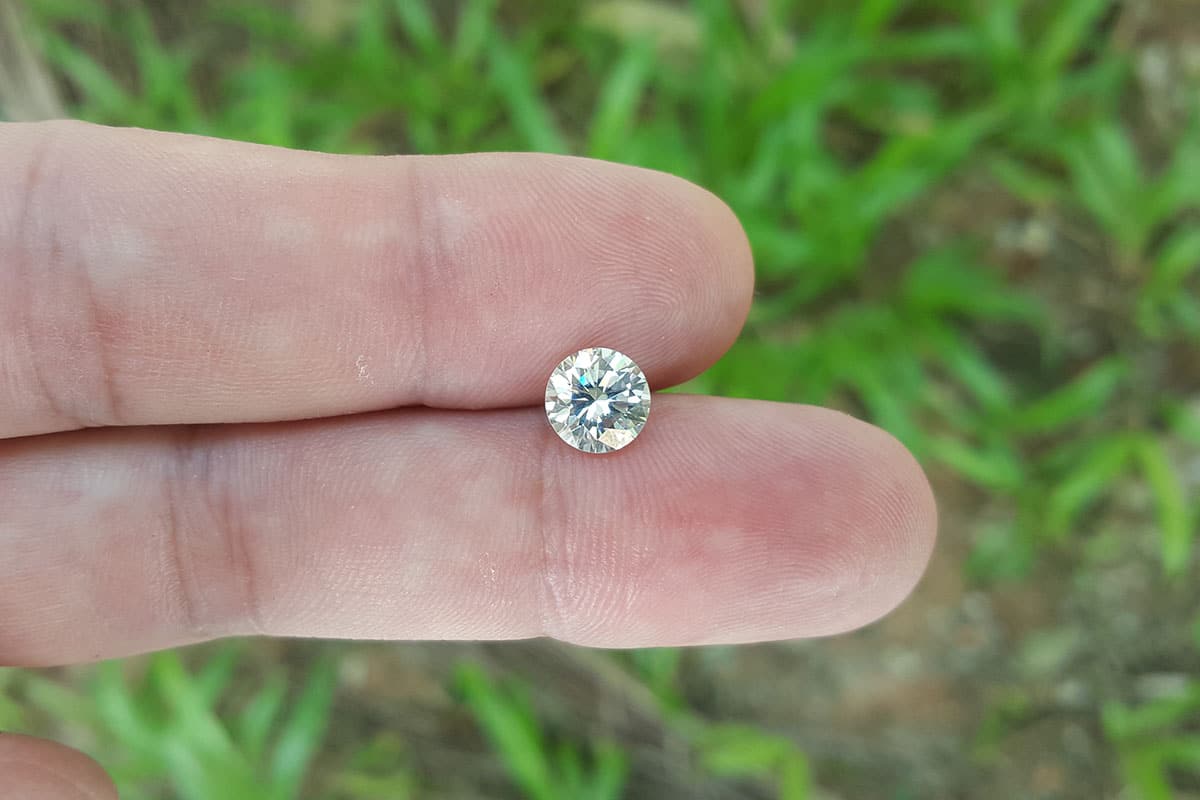
Synthetic moissanite stone is a diamond simulant with an affordable price for jewelry as engagement rings, earrings or necklaces.
Buy natural gemstones in our shop
Synthetic moissanite stone
Moissanite is a natural occurring mineral that is named after its discoverer, 1906 Nobel Prize (chemistry) winner Henri Moissan (1852-1907). As a natural source, this mineral is not suitable to be cut into gemstones as it occurs in too small grains and is very rare.
It was synthesized (1893) before it was discovered (1905) in nature.
Synthesizing moissanite has never been a real problem, however at first it was only synthesized for industrial purposes. This material, with a hardness of 9.25 on Moh’s scale, is known by many bench jewelers, lapidarists and dentists as “carborundum” and is widely used as a sharpening tool for gravers and scrapers. As many who use carborundum can testify, this material is not very attractive as a gemstone.
Around 1987 Cree Research found a method to produce gemstone quality, but it was not until 1993 that a near-colorless crystal was obtained. The technique was patented in 1998 and the synthetics are created with the sublimation method. Today this gemstone synthetic is marketed as Charles & Colvard created Moissanite™.
Although a nice synthetic on its own, this material is used mainly as a diamond simulant. Since the arrival of synthetic cubic zirconia in 1976, this is the most convincing diamond simulant, although a trained eye can easily separate from diamond.
Diagnostics
It can be easily separated from diamond by the doubling of facets, due to its high birefringence. The stone is usually cut with the table cut perpendicular to the optic axis, so care should be taken to observe the stone from an angle to the table.
Other clues are parallel needles (along the optic axis) and pinpoint inclusions in synth. moissanite.
Refractive index
It has a refractive index higher than diamond and the standard gemological refractometer will not be of any help.
Moissanite crystal stone meaning and healing properties benefits
The following section is pseudo scientific and based on cultural beliefs.
A tremendous rumination stone, provides composure within and strengthens the acquaintance with your inner adolescent. It is an immense crystal that supply buff radiance in all areas of life. It unites all the chakras and sanitizes brainpower, cadaver and spirit.
FAQ
Is a moissanite diamond a real diamond?
No, Practically, it has much more colored sparkle than a Diamond. It is 9.25 on the hardness scale, diamond is a 10. And it is carbon silicate, whereas diamond is pure carbon.
Is a moissanite engagement ring tacky?
No, there is nothing wrong to wear fake stones. The answer to this question is a personal choice.
Is moissanite the best fake diamond?
For a long time it was the best imitation of diamond. But today there are perfect copies of synthetic diamond. It is impossible, even for a gemologist to see the difference with a real diamond by naked eye. The stone must be tested in a laboratory with advanced technology.
Why is moissanite so expensive?
Synthetic moissanite price: Because the crystal is considered a good copy of diamond, it cost much more than a cubic zirconia or other simulant (except synthetic diamond). Compared to other diamond imitation on real gold band, moissanite price jewelry is much more expensive.
Can I pass off my moissanite as a diamond?
Rings do not look fake. Many rings can be passed off as a diamond, even though the two stones are different. While a professional will be able to tell the ring is fake, it is easy to pass this kind of stone off as a diamond in your ring.
Can you scratch a moissanite?
It is extremely hard: 9.25-9.5 on the Mohs scale of hardness, but it isn’t indestructible. As with diamonds, it is possible to scratch, chip, crack, or break them with a harder item or a big enough impact. Still, the crystal is considered a forever stone, which can last for generations.
What can damage moissanite?
Most household cleaners and bleaches contain chlorine that could discolor and even damage your beautiful stone.
Will moissanite cut glass?
Yes, the stone can scratch glass. Glass is only rated at 5.5 on the scale, meaning that the stone can easily scratch, or cut, glass.

